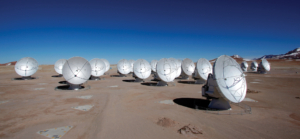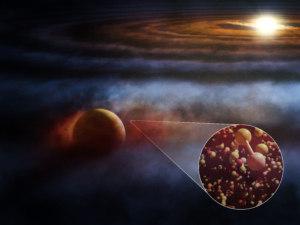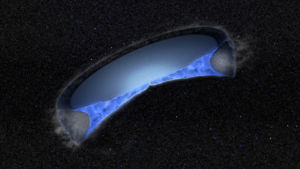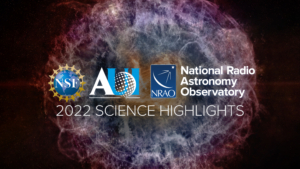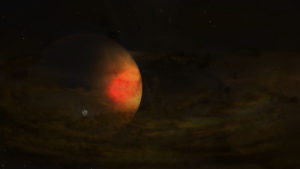An international team of astronomers have found ring and spiral structures in very young planetary disks, demonstrating that planet formation may begin much earlier than once thought. The results were presented today at the 243rd Meeting of the American Astronomical Society.
A Surprise Chemical Find by ALMA May Help Detect and Confirm Protoplanets
Scientists using the Atacama Large Millimeter/submillimeter Array (ALMA) to study the protoplanetary disk around a young star have discovered the most compelling chemical evidence to date of the formation of protoplanets. The discovery will provide astronomers with an alternate method for detecting and characterizing protoplanets when direct observations or imaging are not possible.
ALMA Traces History of Water in Planet Formation Back to the Interstellar Medium
Scientists studying a nearby protostar have detected the presence of water in its circumstellar disk. The new observations made with the Atacama Large Millimeter/submillimeter Array (ALMA) mark the first detection of water being inherited into a protoplanetary disk without significant changes to its composition. These results further suggest that the water in our Solar System formed billions of years before the Sun. The new observations are published today in Nature.
Science Highlights 2022: Black Holes, Pulsars and Turbulence
The Universe is a dynamic and exciting place, with stars, planets, and galaxies being born, dying, and undergoing dramatic changes. In 2022, the telescopes of the National Science Foundation’s National Radio Astronomy Observatory (NRAO) revealed fascinating new details about several of these processes, and we’re giving you a taste of the greatest radio astronomy moments of the year.
ALMA Makes First-Ever Detection of Gas in a Circumplanetary Disk
Scientists using the Atacama Large Millimeter/submillimeter Array (ALMA)— in which the National Radio Astronomy Observatory (NRAO) is a partner— to study planet formation have made the first-ever detection of gas in a circumplanetary disk. What’s more, the detection also suggests the presence of a very young exoplanet.
Baseline #11 – Finding Planets That Have No Star
Most planets orbit a star, but some planets can escape and “go rogue.” But how do astronomers study planets that wander the cold dark of interstellar space? Join our host, Summer Ash of the National Radio Astronomy Observatory, as she talks about how radio astronomers study rogue planets.






